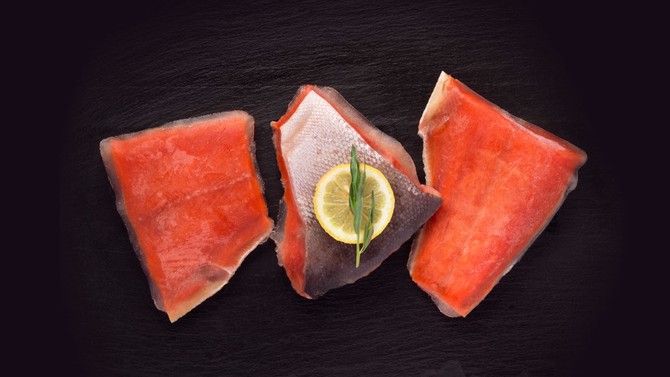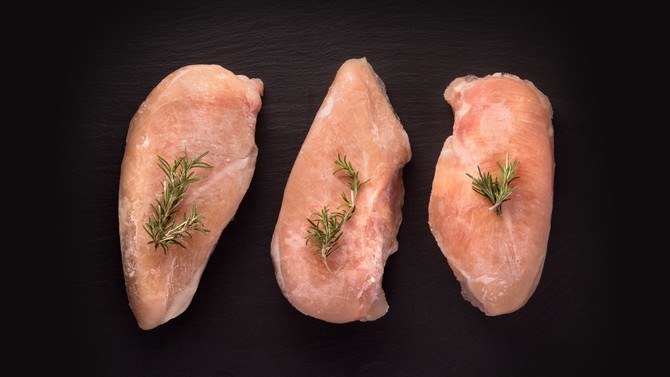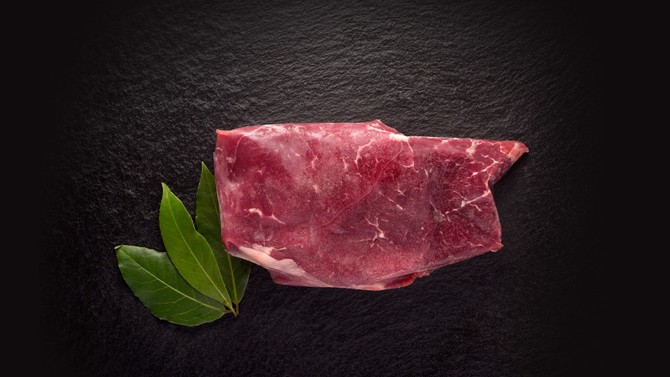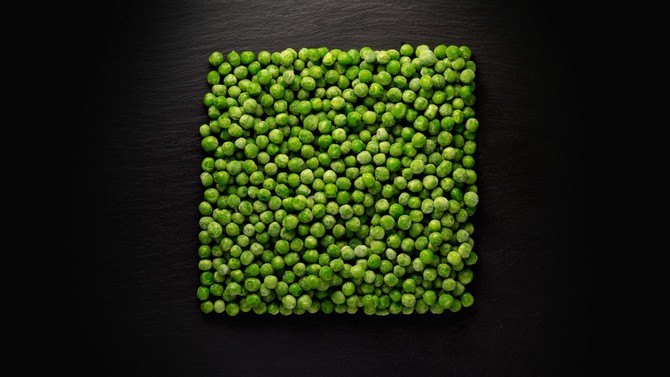4 Frozen Foods You Don't Have to Defrost
If there just isn't time to thaw these dinner staples first, you can just cook them frozen with delicious results. Here's how.
By Lynn Andriani

Photo: Paul Delmont
Fish
Why it's worth trying: Since salmon, tilapia, cod and other fish cook so quickly normally, the few extra minutes you need to add to the cooking time with frozen will hardly set you back. Chefs say there's no need to thaw fillets first, whether you plan to broil, poach, roast, grill, sauté/pan-sear or steam them.
What you need to know: For every method (aside from poaching or steaming), the first thing they advise is to rinse the seafood under cold water to remove any ice glaze and pat it dry with a paper towel. To broil, brush both sides with vegetable oil, lightly grease a foil-lined sheet, place the fish on it and cook at 450° for 12 to 15 minutes (which is only 7 to 10 minutes longer than you would if the fish had been thawed first). To sauté, heat a nonstick skillet over medium-high heat, brush both sides of the fish with oil, place in pan (skin side up), and cook, uncovered, 3 to 4 minutes, until browned. Turn the fish over and add any seasonings, such as herbs or lemon slices, cover with a lid and reduce heat to medium, cooking an additional 6 to 8 minutes. It's done when it's opaque throughout. (WildAlaskaSeafood.com has helpful directions on other methods.)
What you need to know: For every method (aside from poaching or steaming), the first thing they advise is to rinse the seafood under cold water to remove any ice glaze and pat it dry with a paper towel. To broil, brush both sides with vegetable oil, lightly grease a foil-lined sheet, place the fish on it and cook at 450° for 12 to 15 minutes (which is only 7 to 10 minutes longer than you would if the fish had been thawed first). To sauté, heat a nonstick skillet over medium-high heat, brush both sides of the fish with oil, place in pan (skin side up), and cook, uncovered, 3 to 4 minutes, until browned. Turn the fish over and add any seasonings, such as herbs or lemon slices, cover with a lid and reduce heat to medium, cooking an additional 6 to 8 minutes. It's done when it's opaque throughout. (WildAlaskaSeafood.com has helpful directions on other methods.)

Photo: Paul Delmont
Chicken
Why it's worth trying: There are many ways to defrost frozen poultry, but cooking this popular weeknight main frozen is perfectly acceptable from a safety standpoint, according to the USDA.
What you need to know: The USDA advises factoring in approximately 50 percent more cooking time than the recipe normally recommends, so if the directions say 40 minutes, it'll probably need an hour to hit 165° internally, i.e., fully cooked. From a taste perspective, know that you'll get the best, most even results if you bake the chicken instead of grilling, sautéing or microwaving it.
What you need to know: The USDA advises factoring in approximately 50 percent more cooking time than the recipe normally recommends, so if the directions say 40 minutes, it'll probably need an hour to hit 165° internally, i.e., fully cooked. From a taste perspective, know that you'll get the best, most even results if you bake the chicken instead of grilling, sautéing or microwaving it.

Photo: Paul Delmont
Beef
Why it's worth trying: A sale on strip loin can be a wonderful thing, since steak keeps well in the freezer.
What you need to know: Not only is it okay to cook steak frozen, doing so can actually result in juicier, better-tasting meat, when you compare it to meat that you've thawed first and then cooked. This fascinating America's Test Kitchen video shows how cooked-from-frozen steaks lose less moisture than cooked-from-thawed steaks. Steaks will take a little longer to get to medium rare (after a quick sear on the stovetop, they need 18 to 20 minutes in a 275° oven, versus 10 to 20 for nonfrozen ones). And to avoid splattering and flare-ups, be sure there are no ice crystals on the steak before you sear it.
What you need to know: Not only is it okay to cook steak frozen, doing so can actually result in juicier, better-tasting meat, when you compare it to meat that you've thawed first and then cooked. This fascinating America's Test Kitchen video shows how cooked-from-frozen steaks lose less moisture than cooked-from-thawed steaks. Steaks will take a little longer to get to medium rare (after a quick sear on the stovetop, they need 18 to 20 minutes in a 275° oven, versus 10 to 20 for nonfrozen ones). And to avoid splattering and flare-ups, be sure there are no ice crystals on the steak before you sear it.

Photo: Paul Delmont
Vegetables
Why it's worth trying: Like steak, peas, carrots and other veggies also taste better when you cook them frozen instead of thawing them first. That's because water makes up over 90 percent of the weight of most vegetables, so freezing the veggies means you're also freezing the water contained on the plants' cells. When thawed, the frozen water expands and breaks the cell walls, so the vegetable's texture becomes much softer (or just plain mushy). To combat this, cook the vegetables frozen.
What you need to know: Most frozen vegetables you buy in grocery stores are in small enough pieces that won't take long to cook, so add them to dishes such as casseroles, stir-fries, frittatas or soups near the end of the total cooking time. One more thing to note: Starchy vegetables, including peas, corn and lima beans, are more likely to retain their texture and structure once cooked than less starchy ones, such as cauliflower and mushrooms.
What you need to know: Most frozen vegetables you buy in grocery stores are in small enough pieces that won't take long to cook, so add them to dishes such as casseroles, stir-fries, frittatas or soups near the end of the total cooking time. One more thing to note: Starchy vegetables, including peas, corn and lima beans, are more likely to retain their texture and structure once cooked than less starchy ones, such as cauliflower and mushrooms.
Published 07/15/2015

